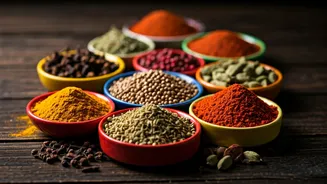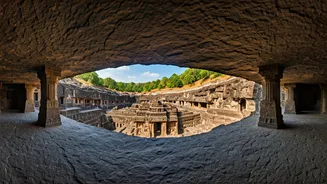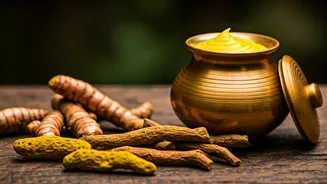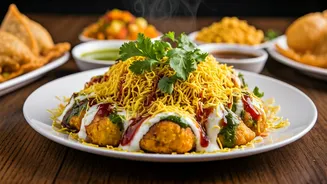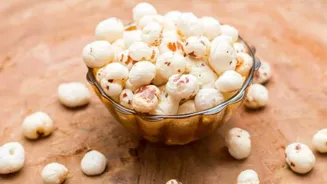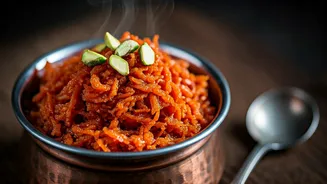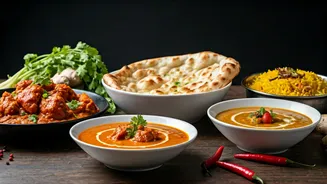Spice Route Begins
The spice trade has significantly shaped Indian food, weaving an intricate tapestry of flavors across the country. Spices like turmeric, cumin, coriander,
and cardamom are essential. Turmeric, known for its vibrant yellow color and earthy flavor, is a cornerstone in many dishes, offering both color and health benefits. Cumin provides a warm, earthy taste. Coriander brings a refreshing citrusy note. Cardamom contributes a sweet and aromatic fragrance. The spice combinations differ regionally. The use of chilies, with their varying levels of heat, is another vital element. Whether mild or fiery, they add depth and character to each dish. Indian cuisine is not just about taste; it is a blend of cultures. The influence of various cultures can be seen in the use of rice, lentil dishes, and different cooking methods.
North Indian Delights
North Indian cuisine is known for its rich and creamy gravies, often featuring dairy products like ghee (clarified butter) and cream. Butter chicken, a global favorite, is a classic example of this style, with its tender chicken simmered in a luscious tomato-based sauce. Another well-known dish is the savory tandoori chicken, cooked in a traditional clay oven, resulting in its smoky flavor. Flatbreads like naan and roti accompany many dishes. The influence of Mughlai cuisine is prominent in North India, especially in the use of nuts and dried fruits in dishes like biryanis. The preparation techniques involve slow cooking and marinating meats and vegetables. These dishes showcase the region's culinary heritage, which has been influenced by different cultures that passed through the region.
South Indian Flavors
South Indian cuisine takes pride in its light, flavorful dishes, often showcasing the use of rice, lentils, and coconut. Dishes like dosa, idli, and vada are staples. Dosa is a thin, fermented crepe, often served with sambar (lentil-based vegetable stew) and chutney. Idli is a steamed rice cake, another breakfast favorite, and vada is a savory, deep-fried fritter. The use of coconut milk is ubiquitous, adding richness and a subtle sweetness to curries. The flavor profile is characterized by the use of tamarind for a tangy taste. Seafood is an integral component in coastal regions. Dishes like fish curry and prawn fry reflect the abundance of fresh catches. South Indian cuisine is known for its vegetarian options, and temple food traditions can be seen in many recipes.
West Indian Staples
The cuisine of West India brings a diverse range of flavors. In Maharashtra, the use of peanuts and sesame seeds adds a distinct flavor. The coastal areas emphasize seafood. The popular dish vada pav, a deep-fried potato patty served in a bread bun, is a flavorful snack. Gujarat is known for its vegetarian thalis, which include sweet, savory, and spicy elements. The state's cuisine is often influenced by Jain traditions. The food is typically mild and is prepared with fresh ingredients. The use of jaggery (unrefined sugar) is prevalent. In Goa, the Portuguese influence can be seen in dishes such as vindaloo, which is a pork dish with a tangy and spicy flavor. The Goan dishes frequently include seafood and coconut. West Indian cuisine is characterized by its wide variety and the incorporation of local ingredients.
East Indian Secrets
East Indian cuisine showcases a range of flavors and influences, reflecting the region's diverse cultures. Bengal is famous for its fish dishes, such as the iconic 'ilish' (hilsa) with its distinct taste. Mustard oil is often used in cooking. Rice is a staple, and the sweet dishes like 'rasgulla' and 'sandesh' are extremely popular. In Odisha, 'dalma' (a lentil and vegetable dish) is a traditional favorite. The use of coconut and spices is common, and the cuisine is often associated with temple food. The cuisine of the Northeast offers unique dishes. Each state has unique ingredients. The use of bamboo shoots, fermented foods, and unique spices is common. Dishes reflect both indigenous traditions and the influences of neighboring countries. The focus on local produce and the use of traditional cooking methods create a unique culinary experience.
Essential Ingredients
The success of Indian cooking hinges on a select set of key ingredients that create its distinct character. Spices, as mentioned earlier, form the flavor base. Fresh herbs such as cilantro, mint, and curry leaves add aroma and freshness to dishes. Lentils and pulses are important. They contribute proteins and texture to a variety of dishes. Rice, a staple in many regions, is consumed in numerous varieties, with basmati being the most popular. The use of dairy products like ghee, yogurt, and paneer (Indian cheese) adds richness. Ghee imparts a nutty flavor, yogurt adds tang, and paneer provides texture and structure to dishes. Other essential ingredients include onions, garlic, and ginger, which form the base for many curries and provide a rich flavor. The quality and freshness of the ingredients are vital to achieve authentic Indian flavors.
Cooking Techniques
Indian cooking is characterized by specific techniques that bring out the best in the ingredients. Sautéing spices and aromatics in oil creates a flavorful base. This process allows the flavors to meld. Grinding spices fresh can enhance their aroma and taste. Slow cooking, especially for curries and stews, allows flavors to meld, resulting in more complex and deeper flavors. Tandoori cooking, using a clay oven, imparts a smoky flavor to meats and breads. Tempering involves heating oil with spices to release their aromas. It’s added to the finished dish for added flavor. Fermenting, particularly for dishes like dosa and idli, adds a unique tangy flavor. The use of a variety of techniques is essential to produce the diversity found in Indian cuisine. Each technique contributes a distinct layer of flavor and aroma to the dishes.
Regional Variations
Indian cuisine is incredibly diverse, with regional variations showcasing unique ingredients and cooking styles. Each state has its own specialties. From the creamy gravies of North India to the light dishes of the South, the use of spices and regional ingredients brings about this diversity. Coastal regions emphasize seafood, with the use of coconut milk and other locally available ingredients. Vegetarians have a wide variety of options in Indian cuisine. Religious traditions and cultural practices also influence food habits. Understanding the regional variations allows one to appreciate the broad spectrum of flavors in Indian food. The same dish may taste distinct depending on the region due to the different use of spices and local ingredients. This diversity makes Indian cuisine very complex.
Appreciating Indian Cuisine
To fully appreciate Indian cuisine, consider the blend of flavors, aromas, and textures. Explore various dishes, ranging from the mild to the spicy. Try to understand the cultural significance behind different dishes. The way they are eaten, often with hands, is an important cultural practice. Consider the importance of family and community meals, as Indian cuisine is often shared. The presentation of the dishes can also add to the experience. Exploring Indian food can be a journey. Learn about the use of spices and local ingredients. Engage with Indian culture, from the hospitality to the storytelling around the food. Appreciating Indian cuisine goes beyond taste. It involves learning the history and cultural practices associated with food.



